The following are the Counties and Cities and whom they were names for.
The Counties
County of Cenoz
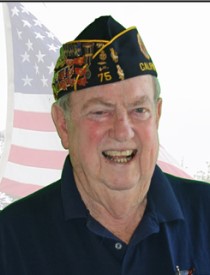 Joe Cenoz was involved with the American Legion as a member for 72 years. He was the longest serving Staff Member of The American Legion California Boys State Program. His 62 years on the Staff included 22 years as Chief Counselor. He was an integral part of 62 of the first 80 years of the Program. His service to the American Legion California Boys State Program earned him a place on The American Legion Boys Nation Staff from 1980 to 1995. It was during a trip to The White House while serving on the American Legion Boys Nation Staff that Joe was reunited with one of his World War II submarine service shipmates: President Jimmy Carter.
Joe Cenoz was involved with the American Legion as a member for 72 years. He was the longest serving Staff Member of The American Legion California Boys State Program. His 62 years on the Staff included 22 years as Chief Counselor. He was an integral part of 62 of the first 80 years of the Program. His service to the American Legion California Boys State Program earned him a place on The American Legion Boys Nation Staff from 1980 to 1995. It was during a trip to The White House while serving on the American Legion Boys Nation Staff that Joe was reunited with one of his World War II submarine service shipmates: President Jimmy Carter.
Joe’s military service in the United States Navy included 4 years during World War II and he was then recalled in 1950 for three years during the Korean War.
Joe’s commitment to the American Legion went beyond Boys State. He served as Post Commander in La Puente, CA.
After completing his military service, Joe attended Mount San Antonio College and earned an AA Degree. He then began a 27-year law enforcement career with the Pomona Police Department. Joe retired in 1978 as a Lieutenant. After his retirement, he worked at the Santa Anita Racetrack as the Chief of Security.
Joe’s service to his community extended beyond The American Legion. He worked with AAU as a Track Official for over 22 years. Joe had a passion for youth and carried it into his involvement with the Elks. He was Exalted Ruler of the Pomona Elks Lodge, and went on to serve as District State Vice-President, National Chair Youth Activities and was a Rose Parade Float participant.
Joe created The American Legion California Boys State Hall of Fame in 2010. He was inducted in 2012.
Submitted by Jeff Cenoz and Tim Aboudara, Sr.
County of Baker
 Frank Baker joined The American Legion California Boys State Staff as the Program Secretary in 1955 working for the Program Business Manager. During the mid-1960s, the position of Secretary evolved into the position of Program Administrator. He oversaw a staff of four other volunteers who provided all of the office support services to the Boys State Delegates and Staff. He completed 50 years of service in 2004 when he retired from the Program.
Frank Baker joined The American Legion California Boys State Staff as the Program Secretary in 1955 working for the Program Business Manager. During the mid-1960s, the position of Secretary evolved into the position of Program Administrator. He oversaw a staff of four other volunteers who provided all of the office support services to the Boys State Delegates and Staff. He completed 50 years of service in 2004 when he retired from the Program.
Frank was a well-known Sacramento area high school teacher who enlisted the help of many of his students in the Boys State Office during the Program. He was also a longtime American Legion Member who was a veteran of World War II.
Frank was inducted, posthumously, into the The American Legion California Boys State Hall of Fame in 2015 by his successor and fellow Hall of Fame member, Barbara “Chic” DeVault. An American Legion California Boys State County is named in Frank’s memory.
County of Dunn
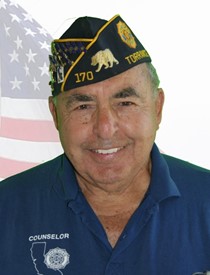 Stan Dunn was a member of The American Legion California Boys State Staff for over 50 years. He was one of only 6 individuals to achieve that milestone. At Boys State, Stan was a key member of the Program’s Legal and Elections Team assisting Delegates with their court cases and elections issues. To celebrate his 50 years of service to the Program, he returned the role of City Counselor. He was inducted into The American Legion California Boys State Hall of Fame in 2012.
Stan Dunn was a member of The American Legion California Boys State Staff for over 50 years. He was one of only 6 individuals to achieve that milestone. At Boys State, Stan was a key member of the Program’s Legal and Elections Team assisting Delegates with their court cases and elections issues. To celebrate his 50 years of service to the Program, he returned the role of City Counselor. He was inducted into The American Legion California Boys State Hall of Fame in 2012.
In addition to The American Legion California Boys State Program, Stan’s life was most noted for his continuous community service to many South Bay organizations including Torrance Unified Schools, El Camino College and the American Legion. He served in the U.S. Navy in World War II, later enlisting in the U.S. Army during the Korean War. He was a lawyer, banker, and business owner of one of the oldest family-owned commercial printing companies in California.
Stan passed away in late 2017.
Submitted by Family Members
County of Haley
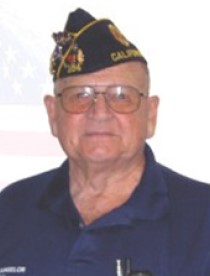 Lee Haley, Sr., was born on August 18, 1929 in Pittsburg, CA. His early years were spent in many locations due to the depression, but he eventually came to reside in Los Angeles. He and his family became residents of Torrance, CA, in 1956. Lee was married to his high school sweetheart for 56 years, and was devoted to his son, two daughters, and seven grandchildren.
Lee Haley, Sr., was born on August 18, 1929 in Pittsburg, CA. His early years were spent in many locations due to the depression, but he eventually came to reside in Los Angeles. He and his family became residents of Torrance, CA, in 1956. Lee was married to his high school sweetheart for 56 years, and was devoted to his son, two daughters, and seven grandchildren.
Lee graduated from Manual Arts High School (Los Angeles) in 1947, having been an excellent student, athlete, and an active member of student government. He enlisted in the Air force in 1948, quickly rising to Sergeant, joined the officer candidate training program, and then joined the flight training program. He was close to graduating as an F-80 fighter pilot when his plane caught fire during a training flight in November, 1950, causing his Air Force career to be cut short due to the loss of his left leg above the knee. His strong will prevailed, and after retiring from the Air Force he went on to receive a Bachelor of Arts in Education from Pepperdine University, and subsequently, a Master of Arts in Education from the University of Southern California. He began his teaching career in 1956 at Narbonne high School in the Los Angeles Unified School district, teaching primarily U.S. History and Civics, and taught there for 33 years until his retirement. He was also a successful football and track coach at Narbonne (despite having to wear a prosthetic leg).
Lee joined the American Legion California Boys State program in the mid-1950s, serving the Program for 48 years. During his time at Boys State he was a successful City Counselor, Party Counselor, County Counselor, and rose to become the Assistant Chief Counselor under Chief Counselor, Joe Cenoz. Leading the program for many years, Joe and Lee were noted for their strong leadership, dedication to the program, and setting a solid benchmark for the many counselors that followed them.
Being a teacher, coach, CA Boys State Counselor, and an Amateur Athletic Union (AAU) track and field official, Lee touched of lives of literally thousands of our youth. His dedication to their enrichment and growth left a long legacy of commitment to the development and success of many generations embarking on adulthood.
Submitted by Lee Haley, Jr.
County of Romano
The Cities
Cenoz County
City of Adams
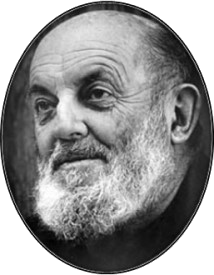 Ansel Adams, (Feb. 20 1902 — Apr. 22, 1984), photographer and environmentalist, was born in San Francisco, California, the son of Charles Hitchcock Adams, a businessman, and Olive Bray. The grandson of a wealthy timber baron, Adams grew up in a house set amid the sand dunes of the Golden Gate. …
Ansel Adams, (Feb. 20 1902 — Apr. 22, 1984), photographer and environmentalist, was born in San Francisco, California, the son of Charles Hitchcock Adams, a businessman, and Olive Bray. The grandson of a wealthy timber baron, Adams grew up in a house set amid the sand dunes of the Golden Gate. …
An only child, Adams was born when his mother was nearly forty. His relatively elderly parents, affluent family history, and the live-in presence of his mother’s maiden sister and aged father all combined to create an environment that was decidedly Victorian and both socially and emotionally conservative…
When Adams was twelve he taught himself to play the piano and read music. Soon he was taking lessons, and the ardent pursuit of music became his substitute for formal schooling. For the next dozen years the piano was Adams’s primary occupation and, by 1920, his intended profession….
If Adams’s love of nature was nurtured in the Golden Gate, his life was, in his words, “colored and modulated by the great earth gesture” of the Yosemite Sierra (Adams, Yosemite and the Sierra Nevada, p. xiv). He spent substantial time there every year from 1916 until his death. From his first visit, Adams was transfixed and transformed. He began using the Kodak No. 1 Box Brownie his parents had given him….
The Sierra Club was vital to Adams’s early success as a photographer. His first published photographs and writings appeared in the club’s 1922 Bulletin, and he had his first one man exhibition in 1928 at the club’s San Francisco headquarters….
Nineteen twenty seven was the pivotal year of Adams’s life. He made his first fully visualized photograph, Monolith, the Face of Half Dome, and took his first High Trip. More important, he came under the influence of Albert M. Bender, a San Francisco insurance magnate and patron of arts and artists. Literally the day after they met, Bender set in motion the preparation and publication of Adams’ first portfolio, Parmelian Prints of the High Sierras [sic]. Bender’s friendship, encouragement, and tactful financial support changed Adams’s life dramatically. His creative energies and abilities as a photographer blossomed, and he began to have the confidence and wherewithal to pursue his dreams. Indeed, Bender’s benign patronage triggered the transformation of a journeyman concert pianist into the artist whose photographs, as critic Abigail Foerstner wrote in the Chicago Tribune (Dec. 3, 1992), “did for the national parks something comparable to what Homer’s epics did for Odysseus.”
Adams described himself as a photographer — lecturer — writer. It would perhaps be more accurate to say that he was simply — indeed, compulsively — a communicator. He endlessly traveled the country in pursuit of both the natural beauty he revered and photographed and the audiences he required. Adams felt an intense commitment to promoting photography as a fine art and played a key role in the establishment of the first museum department of photography, at the Museum of Modern Art in New York….
Excerpt from William Turnage, Reprinted courtesy of the author and Oxford University Press
City of Bancroft
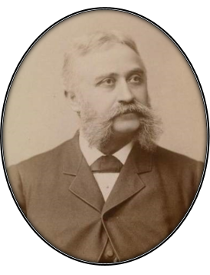 Hubert Howe Bancroft (May 5, 1832 – March 2, 1918) was an American historian and ethnologist who wrote, published and collected works concerning the Western United States, Texas, California, Alaska, Mexico, Central America and British Columbia.
Hubert Howe Bancroft (May 5, 1832 – March 2, 1918) was an American historian and ethnologist who wrote, published and collected works concerning the Western United States, Texas, California, Alaska, Mexico, Central America and British Columbia.
Bancroft was born in Granville, Ohio to Azariah Ashley Bancroft and Lucy Howe Bancroft. His parents were staunch abolitionists. The family home was a station on the Underground Railroad, and is now a dormitory on the campus of Denison University. He attended the Doane Academy in Granville for a year, and he then became a clerk in his brother-in-law’s bookstore in Buffalo, New York. In March 1852, he was sent to San Francisco, California, where he initiated and managed a regional office of the business. He also began his own publishing house. In 1868, he resigned from his business in favor of his brother, A. L. Bancroft. He had accumulated a great library of historical material, and abandoned business to devote himself entirely to writing and publishing history.
Bancroft’s library consisted of books, maps, and printed and manuscript documents, including a large number of narratives dictated to Bancroft or his assistants by pioneers, settlers, and statesmen. The indexing of this vast collection employed six persons for ten years. The library was moved in 1881 to a fireproof building, and in 1900 numbered about 45,000 volumes.
He developed a plan to publish a history of 39 volumes of the history of the entire Pacific coast region of North America, from Central America to Alaska. He employed collaborators for the preliminary work, and then revised it all, and wrote the most important chapters himself. In 1886 the publishing establishment of A. L. Bancroft & Company burned, and the sheets of seven volumes of the history he had written were destroyed.
Bancroft died in 1918 in Walnut Creek, California, two days after being struck by a street car. He is interred in the Cypress Lawn Memorial Park in Colma, California. The Bancroft Library at UC Berkeley, named in his honor, was founded when the University of California purchased his book collection in 1905. Part of a property Bancroft bought (c.1880) in Contra Costa County, California, is now the Ruth Bancroft Garden. An archive of Bancroft family correspondence, collected by his daughter Kate, is held in the Mandeville Special Collections Library in the Geisel Library at the University of California, San Diego.
Information gleaned from several internet sites
City of Beard

David ‘Dave” Beard, was born in Covington Ohio in 1930. Covington, Ohio in the 1930s was considered an Amish town, so life was very strict for everyone, not just the Amish. Dave was the youngest of three children. In school he was a three-sport athlete, football, basketball, and track. During his senior year of High School, he received a football scholarship to Heidelberg University in Tiffin, Ohio.
While attending Heidelberg, the Korean War broke out and the United States instated the draft. Dave had a choice of joining the United States Army, or becoming one of the few, and the proud. He chose the United States Marine Corps. He was quickly sent to Platoon leaders’ course at Perris Island. After that he returned to Heidelberg and got his Bachelor of Science degree. While finishing up his degree he met a young lady named Nancy in his “Games of Lower Organizations Class” while on a trampoline. His Wife majored in Physical Education and Minored in Social Studies. Upon graduation he was commissioned 2nd Lieutenant in 1953.
He married Nancy on June 12th, 1954. His first orders sent him to Camp Pendleton, California and Dave was there for a few months before he was sent to the U.S. Army Artillery School at Fort Sill, Oklahoma. While in Fort Sill, they had to rent a washing machine to do their laundry, because the post did not have a laundromat. Unluckily for them, they had to hook it up to the kitchen sink which got to be very inconvenient. For the beginning of his Marine Corps career, he seemed to always be in school. When he returned to Pendleton, he was the Artillery Officer.
Most of the rest of his 24 years in the Marine Corps was spent all over the East Coast. However, during his time in the Marines, he served 3 tours in Okinawa and one tour in Vietnam. During that same time, Dave and Nancy had 3 children. If you were to ask the kids where they are from, they would all answer Camp Lejeune because they spent so much time there. While stationed in Quantico, their laundry issues continued, there was no laundromat, and so Dave’s utilities were cleaned in the bathtub and Nancy used to use a Revere saucepan to help keep the shape of his cover.
When Dave was in Vietnam, he was stationed in Da Nang where he was called in to be an air observer calling in coordinates for artillery. During this time, he was over exposed to Agent Orange, a problem that would come back in later years. After he returned from Vietnam, he got orders to Twentynine Palms, California.
Unfortunately for Dave, his Marine Corps friend, Jerry Fabricius volunteered him for the Church Council, two months before he even arrived. The Fabs, and Beards seemed to be following each other around the bases all over the East Coast, so it was no surprise they ended up in Twentynine Palms together too. In 1971, Dave served with the 7th Marines for three years. In 1974, Dave retired from the United States Marine Corps as a Lt. Colonel.
Upon retirement Dave went into substitute teaching. He was amongst the first group in California to take the CBST for teaching. He started subbing and quickly became an assistant football coach, as well as the track coach. After Fab had joined the Boys State program, he asked him to come, but with track and football, Dave was too busy. In the spring of 1986, during an evening church choir practice, Fab mentioned that Dave should come up to Boys State, and that he would really enjoy it. Nancy heard Fab ask and said, “He doesn’t have time for that.” Dave looked at Fab and responded, “You know Fab, that sounds like a good idea, I think I will.”
Submitted by Adam Lunn
City of Chambers
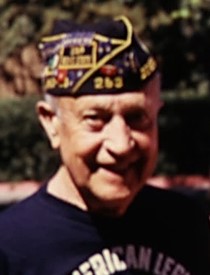 Philo Chambers was a member of The American Legion California Boys state Staff for over 50 years. A high school teacher and American Legion member from Southern California, he was “California Boys State.” He served on the Staff from 1940 until his retirement in 1981. Most of those years he served as Chief Counselor. He was the sixth and longest serving Chief Counselor of the Program. He was Chief Counselor Emeritus until his death in 1991. An American Legion California Boys State County and the Boys State currency (money) are named in Philo’s honor.
Philo Chambers was a member of The American Legion California Boys state Staff for over 50 years. A high school teacher and American Legion member from Southern California, he was “California Boys State.” He served on the Staff from 1940 until his retirement in 1981. Most of those years he served as Chief Counselor. He was the sixth and longest serving Chief Counselor of the Program. He was Chief Counselor Emeritus until his death in 1991. An American Legion California Boys State County and the Boys State currency (money) are named in Philo’s honor.
He was inducted into The American Legion California Boys State Hall of Fame, posthumously, in 2016.
City of Chandler
 John E. “Jack” Chandler was a member of The American Legion California Boys State Staff for over 40 years. Jack served as a City Counselor, County Counselor and Lead Political Party Counselor. He was also known for his role as the Governor’s Council Counselor where he worked with the newly elected Boys State Governor in completing the set-up of the Boys State Executive Branch of Government.
John E. “Jack” Chandler was a member of The American Legion California Boys State Staff for over 40 years. Jack served as a City Counselor, County Counselor and Lead Political Party Counselor. He was also known for his role as the Governor’s Council Counselor where he worked with the newly elected Boys State Governor in completing the set-up of the Boys State Executive Branch of Government.
Jack served in the United States Navy during the Korean War. This led to his membership and involvement in the American Legion for over 50 years. After his military service, he worked for the County of Los Angeles. After his retirement from the County he continued working as an independent real estate appraiser.
Along with his commitment to the American Legion and the Boys State Program, he continued his involvement in the community as a member of the Elks. In retirement, Jack was active in the retirement communities where he lived in Southern California.
Jack last served on the Boys State Staff in 2017 and passed away in late 2019.
Haley County
City of Crocker
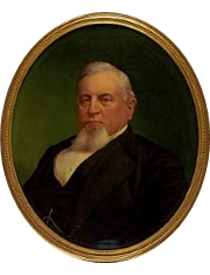 Charles Crocker (September 16, 1822 – August 14, 1888) was an American railroad executive who founded the Central Pacific Railroad, which constructed the westernmost portion of the first transcontinental railroad, and took control with partners of the Southern Pacific Railroad.
Charles Crocker (September 16, 1822 – August 14, 1888) was an American railroad executive who founded the Central Pacific Railroad, which constructed the westernmost portion of the first transcontinental railroad, and took control with partners of the Southern Pacific Railroad.
In 1861, after hearing an intriguing presentation by Theodore Judah, he was one of the four principal investors, along with Mark Hopkins, Collis Huntington and Leland Stanford (also known as the big four), who formed the Central Pacific Railroad, which constructed the western portion of the First Transcontinental Railroad in North America. His position with the company was that of construction supervisor and president of Charles Crocker & Co., a Central Pacific subsidiary founded expressly for the purpose of building the railroad.
Crocker bought train plows to plow the tracks of snow through the mountains, but they derailed due to ice on the tracks. He had more than 40 miles of snow sheds built to cover the tracks in the Sierra Nevada Mountains, to prevent the tracks from getting covered with snow in the winter. This project cost over $2 million.
While the Central Pacific was still under construction, in 1868, Crocker and his three associates acquired control of the Southern Pacific Railroad. It built the westernmost portion of the second transcontinental railroad. Deming, New Mexico, is named after his wife Mary Ann Deming Crocker. A golden spike was driven here in 1881 to commemorate the meeting of the Southern Pacific with the Atchison, Topeka and Santa Fe railroads, completing the construction of the second transcontinental railroad in the United States.
Excerpt from Charles Crocker – Wikipedia
City of DeVault
 Barbara “Chic” DeVault was the first Program Administrator of The American Legion California Boys State Program. She joined the Staff in 1989 as Assistant Administrator working closely with Administrator and fellow Hall of Fame Member Frank Baker. In 2005, she succeeded Frank as the Program Administrator where she continued in that role until her retirement to Administrator Emeritus in 2014. She was inducted into The American Legion California Boys State Hall of Fame in 2014.
Barbara “Chic” DeVault was the first Program Administrator of The American Legion California Boys State Program. She joined the Staff in 1989 as Assistant Administrator working closely with Administrator and fellow Hall of Fame Member Frank Baker. In 2005, she succeeded Frank as the Program Administrator where she continued in that role until her retirement to Administrator Emeritus in 2014. She was inducted into The American Legion California Boys State Hall of Fame in 2014.
Chic joined the United States Navy in June, 1952. After boot camp, she was assigned to Naval Air Station Memphis where she worked as a clerical typist. On Sept. 3, 1953, she married David DeVault who also served on The American Legion California Boys state Staff.
Barbara absolutely loved The American Legion and all the great work it does for veterans. She was the first woman to be elected Commander of Post 521 in Rio Linda and the first woman to be elected State Vice Commander for The American Legion Department of California.
Barbara was director of the Haggin Grant Baseball Team that helped produce many professional baseball players. She also volunteered at Veteran’s Hospitals in the Sacramento/Bay Areas.
Chic passed away in early 2020.
David “Dave” DeVault was a valuable member of the Boys State staff and served as Transportation Counselor. Dave served behind the scenes helping to set up and store the Boys State equipment. He also was an active Legionnaire.
City of Donner
 The Donner Party was a group of 87 American pioneers who set out in a wagon train headed west for California, only to find themselves trapped by snow in the Sierra Nevada. The subsequent casualties resulting from starvation, exposure, disease, and trauma were extremely high, and many of the survivors resorted to cannibalism.
The Donner Party was a group of 87 American pioneers who set out in a wagon train headed west for California, only to find themselves trapped by snow in the Sierra Nevada. The subsequent casualties resulting from starvation, exposure, disease, and trauma were extremely high, and many of the survivors resorted to cannibalism.
The wagons left Missouri for California in May of 1846. Encouraged to try a new, faster route across Utah and Nevada, they opted to take the Hastings Cutoff proposed by Lansford Hastings, who had never taken the journey with wagons. The Cutoff required the wagons to traverse Utah’s Wasatch Mountains and the Great Salt Lake Desert, and slowed the party considerably, leading to the loss of wagons, horses, and cattle. It also forced them to engage in heavy labor by clearing the path ahead of them, and created deep divisions between members of the party. They had planned to be in California by September, but found themselves trapped in the Sierra Nevada by early November.
Most of the party took shelter in three cabins that had been constructed two years earlier at Truckee Lake (now Donner Lake), while a smaller group camped several miles away. Food stores quickly ran out, and a group of 15 men and women attempted to reach California on snowshoes in December, but became disoriented in the mountains before succumbing to starvation and cold. Only seven members of the snowshoe party survived, by eating the flesh of their dead companions. Meanwhile, the Mexican American War delayed rescue attempts from California, although family members and authorities in California tried to reach the stranded pioneers but were turned back by harsh weather.
The first rescue group reached the remaining members, who were starving and feeble, in February 1847. Weather conditions were so bad that three rescue groups were required to lead the rest to California, the last arriving in March. Most of these survivors also had resorted to cannibalism. Forty-eight members of the Donner Party survived to live in California. Although a minor incident in the record of westward migration in North America, the Donner Party became notorious for the reported claims of cannibalism. Efforts to memorialize the Donner Party were underway within a few years; historians have described the episode as one of the most spectacular tragedies in California history and in the record of western migration.
Information gleaned from several internet sites
City of Drake
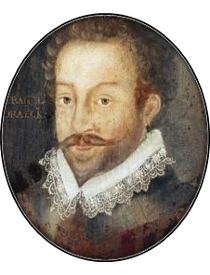 Sir Francis Drake, Vice Admiral, (c. 1540 – January 28 1596) was a pre-eminent English navigator, politician, civil engineer, and known slave trader, of the Elizabethan age. He became the first Englishman to circumnavigate the globe. Queen Elizabeth thought very highly of him and appointed him second-in-command of the English fleet that sailed against the Spanish Armada in 1588.
Sir Francis Drake, Vice Admiral, (c. 1540 – January 28 1596) was a pre-eminent English navigator, politician, civil engineer, and known slave trader, of the Elizabethan age. He became the first Englishman to circumnavigate the globe. Queen Elizabeth thought very highly of him and appointed him second-in-command of the English fleet that sailed against the Spanish Armada in 1588.
Although he was famous for his courage in battle, he was not liked by some of his peers. His legendary exploits made him a hero among the English but to the Spaniards he was equated with the devil himself. He was known as “El Dragón” for his actions. King Philip II placed a bounty on Drake’s head of 20,000 ducats; about 10 million US dollars. Drake’s exploits made a significant contribution to the birth of what became the British Empire, as Elizabeth turned her attention away from ambitions in Europe towards the Americas and beyond, where her colony of Virginia was established. Drake’s activities thus set the stage for Elizabeth’s subjects to settle in North America, where they brought with them notions of religious liberty, of civil society composed of voluntary associations, out of which would arise American democracy.
Drake’s exploits as an explorer have become an irrevocable part of the world’s subconsciousness, particularly in Europe. Numerous stories and fictional adaptations of his adventures exist to this day. Considered a hero in England, it is said that if England is ever in peril, beating Drake’s Drum will cause Drake to return to save the country. This is a variation of the sleeping hero folk-tale.
During his circumnavigation of the globe, Drake left a plate upon leaving his landing place on the west coast of North America, claiming the land for England. In the 1930s, it appeared that Drake’s plate had been found near San Francisco. Forty years later, scientists confirmed that the plate was a hoax, as had been suspected. Later information attributed the hoax to E Clampus Vitus.
Drake’s adventures, though less known in the United States, still have some effect. For instance, a major east-west road in Marin County, California is named Sir Francis Drake Boulevard. It connects Point San Quentin on San Francisco Bay with Point Reyes and Drakes Bay. Each end is near a site considered by some to be Drake’s landing place.
Information gleaned from several internet sites
City of Durkee
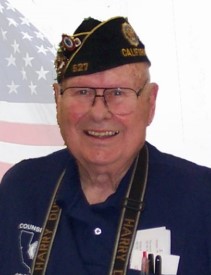 Harry Durkee was born on April 13, 1922 of parents Dr. Charles and Lydia Durkee, in Fairmount, North Dakota. He shared his early life with his two brothers and sister.
Harry Durkee was born on April 13, 1922 of parents Dr. Charles and Lydia Durkee, in Fairmount, North Dakota. He shared his early life with his two brothers and sister.
With the outbreak of World War II, he answered the call to serve his country in the army’s 70th infantry division. He began his service in 1942 and was commissioned as a 2nd Lieutenant in 1944. In the same year he married the love of his life, Norma, before returning to duty in the European theater. In 1945 he was wounded in France and was hospitalized until he was discharged as a Captain in 1947. He received the Purple Heart and Bronze Star for bravery in action.
He attended the University of North Dakota and the University of California, Berkeley, graduating in 1949 with a degree in Geography. He received a Master’s Degree from Pacific Lutheran Theological Seminary in 1954. Harry and Norma had three daughters.
Following his graduation from seminary, Harry served as a consultant for the Lutheran Refugee Service and was in the housing ministry at Harbor Gate, CA under Rev. Ross Hidy and continued his service at Peace Lutheran. In 1954 he was ordained and became a full Pastor at St. James Lutheran church in Richmond, CA. During this time, Harry took part in a Billy Graham crusade in San Francisco and Los Angeles.
In 1959, Harry accepted a call to serve as Pastor of Hollywood Lutheran Church where he presided for 32 years. Upon his retirement in 1991, the fellowship hall at Hollywood Lutheran was renamed Durkee Hall in his honor.
After a brief two-month retirement from the ministry, Harry began serving as Chaplain at four of the senior homes in Burbank. For several years he made hospital calls on behalf of the Burbank First United Methodist Church under Rev. Larry Stamper.
Wherever he served, Harry was a tireless and enthusiastic member of community service groups. In addition to his membership in the Lutheran Council of Churches, Hollywood Ministerial Association, Burbank Ministerial Association, Purple Heart Association, EHLF Kiwanis, and Easter Service Bowl Association, Harry was a devoted Chaplain of nearly 50 years for the American Legion and Boys State.
Harry was an avid reader and an active member of the YMCA volleyball team. He loved the art of magic and would always carry a magic trick in his pocket when making his hospital calls. As an amateur photographer, he so loved taking pictures that many a meal grew cold waiting for him to finish composing his shots. He adored the outdoors, especially camping, hiking and traveling with his church groups. For many years, Harry led a summer ministry in Yosemite and Grant Grove, Kings Canyon. Among his family he was known as a formidable board game and card player, having created his own Monopoly board from scratch. Woe unto those who dared to challenge him at Monopoly.
Harry loved serving his Lord, and he loved God’s people. God, family, and people were the most important things in his life.
Baker County
City of Fabricius
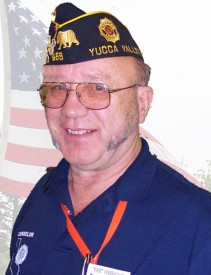
Jerry “Fab” Fabricius was born in Belle Fourche South Dakota. He was born at his grandmother’s house, because in those days, the hospital cost too much money. When he reached the 2nd grade his family moved to the small town of Newell South Dakota. The following summer he started school late because he got injured. When Jerry finally made it back to school, a new girl started school that year. Jerry started with bandage wrapping his head; this new girl took pity on him. She understood what it was like to be new and they became friends. Little did she know, Jerry was at the school the year before, the secret is out now. He married that little girl on December 13th 1954.
Jerry decided to go to college after graduation. He was the first to go in his family. His family was extremely proud. After his first semester he decided to enlist in the Marine Corps. In December of 1953, Jerry was sworn into the United States Marine Corps. Then they sent him home. In January 1954 he finally shipped off to Boot Camp. Out of boot camp Jerry received a whopping $86 base pay as a PFC. He was already on his way to, as he calls it, being independently wealthy. By 1963 he had picked of Warrant Officer. He did that until 1965, where he was commissioned to Second Lieutenant, and retired several years later as a Major.
In 1982 Jerry finally finished that Bachelor’s degree that he started in 1953 at the University of Redlands. He calls it the 29-year plan, with an emphasis in obtaining a couple DD-214’s.
It was because of his bride that Jerry returned to Boys State. He was a South Dakota delegate in 1952 and like most of our young men went off and began their lives. Rosalee had spent a summer at the Freedom Foundation at Valley Forge in 1982. The local American Legion post had helped sponsor her trip and at that awards banquet for Rosalee, Jerry met Boys State Counselor Bud Young. Through talking Bud found out that Jerry had been a Boys Stater and spent the rest of the year trying to get him to be a counselor. Finally, Bud had talked him into submitting his name, and to see what would happen. Well Bud knew what was going to happen, and finally in June 1983 Fab came to California Boys State and would continue to do so until 2017. Not missing a year.
In 1985 Fab decided to drag his best friend from the Marine Corps along with him. Together Fab and Dave Beard were inseparable. If it had not been for Dave all hose years, Fab may have retired a long time ago. When Dave could not come up anymore because of his Medical issues, we thought for sure Fab would stop too. He carried on, he was determined to stay until his grandson was a delegate. When that year came and went, staff members managed to convince him into staying a couple more years until his other grandson was eligible. By that time he was ready to hang up his hat. Staff members again managed to talk him into one more year, to make it a round 35 years. That was the 80th session, in 2017.
What Fab had failed to realize, by being there so long, and spending 30 years as a county counselor, he had become part of the foundation that made Boys State function. Most of the current county counselors had all been one of his city counselors at one time or another. He trained the future leadership of Boys State. His mere presence at the program much likes Dick Schick, Tim Aboudara Jr., Jim Alcorn, and Joe Cenoz, Bill Denson, Bill Smelko, and Jerry Richards; Fab was part of what makes this program so special.
Submitted by Adam Lunn
City of Fremont
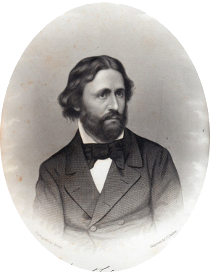 John Charles Frémont (January 21, 1813 – July 13, 1890), was an American military officer and explorer. Fremont mapped most of the Oregon Trail and climbed the second highest peak in the Wind River Mountains. During the 1840s, that era’s penny press accorded Frémont the epithet “The Pathfinder,” which remains in use, sometimes as “The Great Pathfinder.”
John Charles Frémont (January 21, 1813 – July 13, 1890), was an American military officer and explorer. Fremont mapped most of the Oregon Trail and climbed the second highest peak in the Wind River Mountains. During the 1840s, that era’s penny press accorded Frémont the epithet “The Pathfinder,” which remains in use, sometimes as “The Great Pathfinder.”
Fremont was the first candidate of the Republican Party for the office of President of the United States, and the first Presidential candidate of a major party to run on a platform in opposition to slavery. During the Civil War, he was appointed commander of the Union Army’s Western Department by President Abraham Lincoln. Lincoln took back that appointment one hundred days, later when Fremont ordered Missourians to free their slaves. This was one of many ill thought-out, misguided acts toward the abolition of slavery.
Frémont collected a number of plants on his expeditions, including the first recorded discovery of the Single-leaf Pinyon by a European American. The standard botanical author abbreviation Frém. is applied to plants he described. The California Flannelbush, Fremontodendron californicum, is named for him.
Many places are named for Frémont. Four U.S. states named counties in his honor: Colorado, Idaho, Iowa, and Wyoming. Several states also named cities after him, such as California, Michigan, Nebraska, and New Hampshire. Likewise, Fremont Peak in the Wind River Mountains and Fremont Peak in Monterey County, California are also named for the explorer. The Fremont River, a tributary of the Colorado River in southern Utah, was named after Frémont, and in turn, the prehistoric Fremont culture was named after the river—the first archaeological sites of this culture were discovered near its course.
The U.S. Army’s (now inactive) 8th Infantry Division (Mechanized) is called the Pathfinder Division, after John Frémont. The gold arrow on the 8th ID crest is called the “Arrow of General Frémont.”
Information gleaned from several internet sites
City of Hurley
 Jim Hurley lived in Richmond California and was a history and government teacher at De Anzo High School in the Richmond School District. He always pointed out the education was a key to success.
Jim Hurley lived in Richmond California and was a history and government teacher at De Anzo High School in the Richmond School District. He always pointed out the education was a key to success.
Jim was married and raised eight children.
Jim Hurley’s service began in the Navy during World War II on an American destroyer. He reached the rank of First-Class Seaman. He was a member of the American Legion.
He served on the Boys State Staff from 1955 through 1984, a total of 28 years. He first served as a City Counselor. After eleven years he became a County Counselor. For many years, he also served as political party advisor as he was well versed in election procedures. Several years he welcomed the delegates at the Saturday orientation meeting. In addition, he was responsible for recruiting other counselors to the program.
Despite failing health in his later years, Jim continued returning to the program in a wheelchair. He served as election counselor. In his final years Jim served as the programs Technical Advisor.
Jim Hurley was well respected by all and was one of the most dedicated members of the staff contributing 37 years in total. He is remembered for his sense of humor by his fellow Legionnaires.
Jim was inducted into the Boys Hall of Fame posthumously in 2018.
City of Jung
 Darrel “Big Red” Jung was a member of the American Legion California Boys State Staff for 43 years. He was a City Counselor, a County Counselor, and a Political Party Counselor.
Darrel “Big Red” Jung was a member of the American Legion California Boys State Staff for 43 years. He was a City Counselor, a County Counselor, and a Political Party Counselor.
“Big Red”, as he was known to Delegates, Staff, friends, and family was a World War II Veteran and a longtime member of The American Legion. He was a high school teacher and coach from Torrance. He is remembered for his engaging demeanor and “larger than life” personality.
He last served on the Boys State Staff in 2002 a few years before his death.
City of Lutz
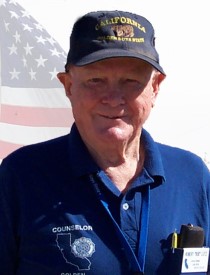 A California Boys State Delegate in 1938, Robert “Bud” Lutz, after his high school graduation, soon became a World War II Veteran serving in the United States Navy. After his service was complete, Bud became a proud alumnus of the University of California at Berkeley, graduating with honors and receiving a degree in Political Science. Law School graduation from the Hastings College of Law soon followed for Bud.
A California Boys State Delegate in 1938, Robert “Bud” Lutz, after his high school graduation, soon became a World War II Veteran serving in the United States Navy. After his service was complete, Bud became a proud alumnus of the University of California at Berkeley, graduating with honors and receiving a degree in Political Science. Law School graduation from the Hastings College of Law soon followed for Bud.
After receiving his Juris Doctor Degree with high honors, Bud began practicing civil and criminal law in the Los Angeles area. After practicing civil and criminal law for 15 years, Bud was appointed by the Judges of the Superior Court to the Municipal Court Bench in Los Angeles. He practiced in both state and federal court. A tremendous trial lawyer with a reputation for integrity, honesty and tenacity, Bud represented both corporate and individual clients. After a 20 year career as a litigator, Bud received an appointment to the Bench in Los Angeles County where he served as a highly respected Municipal Court Commissioner for over 25 years.
Bud was the first former California Boys State delegate to return to the Program as a Counselor. In the mid-1960s, Bud was invited to serve as a legal and election counselor at Boys State. Beginning in 1969, Bud became the Chief Elections Counselor and Acting Secretary of State. Bud continued in that vital role through 2002. Inducted posthumously into the Boy’s State Hall of Fame in 2016, Bud created many of the forms and systems still used today to help thousands of California Delegates learn the process of running for office and the value of honesty and integrity in his role as the longest serving California Boy’s State Acting Secretary of State.
Grimsley County
City of Robinson
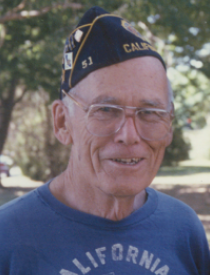 Newt Robinson lived in Whittier California and was a longtime teacher and coach. He was a member of the American Legion.
Newt Robinson lived in Whittier California and was a longtime teacher and coach. He was a member of the American Legion.
Newt joined the Boys State staff in 1961 and served as a City Counselor for several years before moving up to the position of County Counselor. His last year on the staff was 1986. He was extremely dedicated to the program and was a great role model. It was Newt who created the Boys State Forum which continues on today.
City of Shick
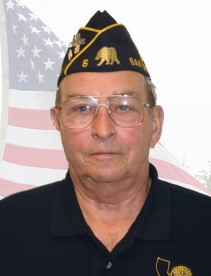 Richard L. Shick has been involved with The American Legion California Boys State Program for over 50 years. He was the Boys State Chairman of his Post in San Diego before he joined the Boys State Staff in 1970. Dick served as a City Counselor from 1970 to 1975. In 1976, Dick was elevated to the role of County Counselor. From 1977 to 1981 Dick served on the Boys State Commission, the American Legion “Board of Directors” that oversees the California Boys State Program.
Richard L. Shick has been involved with The American Legion California Boys State Program for over 50 years. He was the Boys State Chairman of his Post in San Diego before he joined the Boys State Staff in 1970. Dick served as a City Counselor from 1970 to 1975. In 1976, Dick was elevated to the role of County Counselor. From 1977 to 1981 Dick served on the Boys State Commission, the American Legion “Board of Directors” that oversees the California Boys State Program.
In late 1981, the Boys State Commission created the position of Boys State Director. The decision was made to facilitate a transition of responsibility from Philo Chambers, the Chief Counselor of the Program. Dick served the Boys State Program as Director until his retirement to Director Emeritus in 2019. He has been a member of The American Legion California Boys State Staff for over 50 years. He is one of only 6 individuals who have been on the Boys State Staff for more than 50 years.
During Dick’s tenure as Director, the program has grown from 800 +/- delegates annually to over 1000 each year. After Dick became Director, he recognized the need for additional funding and support of the Boys State Program. Approximately 20 years ago, he began working with the Department of California to form The American Legion California Boys State Foundation.
Dick served in the U.S. Army during the Korean conflict. After his discharge, he started his civilian career with the County of San Diego where spent 36 ½ years working for the County in various roles beginning with Public Works and the Department of General Services. His last “tour of duty” was working in Architecture and Engineering (he was a Civil Engineer) helping design and build San Diego County’s Jail System. He retired in 1992.
Dick is a member of San Diego Post 6. His commitment to Legion Programs extends well beyond Boys State. At Post 6, he has served as Commander, Adjutant, Judge Advocate, Executive Committee Member and Boys State Chairman. At the District Level he has served as Adjutant, Finance Officer, Judge Advocate and Boys State Chairman. Dick has also served as the Area 5 Adjutant and Boys State Commission Member. He and his wife Dee are both Legionnaires.
Submitted by Tim Aboudara
City of Sloat
 John D. Sloat was born at the family home of Sloat House in Sloatsburg, New York, of Dutch ancestry, and was orphaned at an early age, his father, Captain John Sloat, having been mistakenly shot and killed by one of his own sentries two months before he was born, and his mother dying a few years later. Sloat was brought up by his maternal grandparents.
John D. Sloat was born at the family home of Sloat House in Sloatsburg, New York, of Dutch ancestry, and was orphaned at an early age, his father, Captain John Sloat, having been mistakenly shot and killed by one of his own sentries two months before he was born, and his mother dying a few years later. Sloat was brought up by his maternal grandparents.
Appointed midshipman in the Navy in 1800, he was sailing master of the frigate United States under Commodore Stephen Decatur during the War of 1812, and was promoted to lieutenant for conspicuous gallantry in the capture of the frigate HMS Macedonian. Sloat then commanded the schooner Grampus during which he fought the Action of 2 March 1825 against the pirate ship of Roberto Cofresí. He later served on the ships Franklin and Washington, and from 1828 commanded the sloop St. Louis with the rank of master commandant, to which he had been promoted in 1826. He was promoted to captain in 1837, and from 1840 to 1844 was in charge of the Portsmouth Navy Yard.
Two destroyers have been named USS Sloat in his honor as well as a WWII Liberty ship, the SS John Drake Sloat. A major street, Sloat Boulevard, and Commodore Sloat elementary school, both in San Francisco, are named after him. Local streets in Monterey, California, Sacramento, California, and the Carthay Circle neighborhood of Los Angeles also bear his name. There is a large monument erected in his honor on the Presidio of Monterey U.S. Army post. An elementary school in Sacramento is also named for him.
Information gleaned from several internet sites
City of Stanford
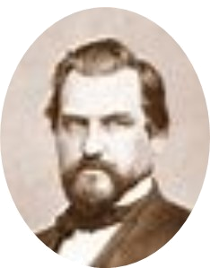 Leland Stanford was one of seven sons of Josiah Stanford, who farmed near Watervliet, New York (on the stage road between Albany and Schenectady). Stanford spent his early years as a typical farm boy and mediocre student. Also during this time, he entered into his first business ventures with his brothers, selling horseradish in Schenectady and chestnuts in Albany. He had his first experiences with railroads when his father graded a part of the railroad (only 15 miles long) between Albany and Schenectady in 1829.
Leland Stanford was one of seven sons of Josiah Stanford, who farmed near Watervliet, New York (on the stage road between Albany and Schenectady). Stanford spent his early years as a typical farm boy and mediocre student. Also during this time, he entered into his first business ventures with his brothers, selling horseradish in Schenectady and chestnuts in Albany. He had his first experiences with railroads when his father graded a part of the railroad (only 15 miles long) between Albany and Schenectady in 1829.
At the age of 20, he began to study law at the office of Wheaton, Doolittle & Hadley in Albany. He financed his education with $2000 he made by selling timber cleared from the land near the railroad. He was admitted to practice in the Supreme Court of New York after staying with the firm for three years.
Stanford married Jane Lathrop and moved to Port Washington in northern Wisconsin to practice law. In 1852, his office and his legal books burned. Since he was almost broke, he sent his wife to live with her parents and went to California, ending up in the mining village of Michigan Bluff. He searched for gold, but found nothing. He then entered into business with two of his brothers, who had gone to California in 1849 when the gold rush began. He had become sufficiently wealthy within four years to be regarded as one of the leading citizens of the mining region. So he entered into a dry-goods-store business in Sacramento.
During his early years in California, Stanford earned the reputation of a fair man, and often arbitrated in disagreements among miners. He began his political career as the Free Soil Party’s candidate for treasurer in 1857. Two years after this defeat, he was nominated by the party for governor. He was again defeated, but his influence spread beyond California when the party sent him to the Chicago convention as its candidate. Abraham Lincoln was nominated for the presidency, but he and Stanford shared a warm friendship. Stanford stayed in Washington after Lincoln’s inauguration. During this time, some say that Stanford “exerted silent but powerful influence upon national policies affecting the Pacific Coast”. When he returned to Sacramento, he was nominated for governor by the Republican Party in 1861 and elected by a large majority for a two-year term. He was selected as one of the backers of the Central Pacific in 1860, at least in part because of his growing power and popularity. Stanford then became the first president of the Central Pacific.
Stanford began pursuing other interests after the Southern Pacific (formerly the Central Pacific) finished its second transcontinental line from New Orleans, across the deserts of Texas, Arizona, and into California. He bought about half a million acres of California farmland and his ranch at Vina produced the largest vineyard in the world. His favorite ranch was in Palo Alto, where he founded a university with a grant of 20 million dollars in honor of his son, Leland Stanford Jr., who died in Florence, Italy, in 1884. Stanford died at Palo Alto on June 21, 1893.
Information gleaned from several internet sites
City of Young

Rolin Fred “Bud” Young was born on July 23rd 1923 to Dred and Louise Young. He was born in Crown Point Indiana and until the day he died he was a diehard Indiana Hoosier Basketball lover and fan. His dad was a Banker in Crown Point Indiana, and during the depression, he also was a musician and would often play his horn in saloons and bars in order to make a little extra cash which he hated because of all of the drinking and smoking. However, because it was the depression Fred, did whatever he could to help his family, including his son Bud to have a successful life.
In 1940, Bud was selected to attend a relatively new program sponsored by the American legion that would teach Americanism to the youth of America. At the time the program was only 5 years old, but Bud was selected to be a delegate at the 1940 Session of Hoosier Boys State.
His mom was a member of the American auxiliary and was instrumental in starting the American Legion Girls State Program in Indiana.
When World War II came to America, Bud like many people his age, answered the call of duty and served in the United States Navy. Bud was a corpsman until he got out of the Navy after the Korean War.
After his service in the Military was over Bud had many jobs. He worked as a filling station attendant at many different locations including working at Shell Station. The job he was most proud of, was in the San Diego area building sail boats.
Bud married his wife Dolores Darlene Young in 1977 and he had two children, John and Dorothy.
While living in Yucca Valley California, Bud joined the American Legion Post 469, and proudly served as post commander in 1984-1985. He was responsible for bringing the Boys State Program to his area high schools as well as American Legion Baseball. In 1981, Bud joined the California Boys State Staff. He served on the staff for 23 years, the last 14 years serving as a County Counselor.
Bud was not a tall man, by any stretch of the imagination, but he had the memory of an elephant. By the end of the week at Boys State he would know every citizen in his county by name.
Submitted by Adam Lunn
Dunn County
City of O’Rourke
 Bob O’Rourke was a longtime Northern California resident. He was a successful businessman with a great sense of humor.
Bob O’Rourke was a longtime Northern California resident. He was a successful businessman with a great sense of humor.
Bob joined the staff of Boys State in 1968, serving as a City Counselor before moving up, in 1987 to the position of a County Counselor. He even served one year as the Athletic Counselor. He was without question one of the most liked individuals ever on the Boys State staff. His last year of service was in 1991.
City of Portola
 The Spanish explorer and colonial governor Gaspar de Portolá (ca. 1723-ca. 1784) headed the Spanish expedition that established the first missions in Alta California.
The Spanish explorer and colonial governor Gaspar de Portolá (ca. 1723-ca. 1784) headed the Spanish expedition that established the first missions in Alta California.
Gaspar de Portolá was born at Balaguer in the province of Catalonia. As a young man, he joined the army and soon rose to the rank of captain of dragoons in the España Regiment. In 1767, as a reward for his services, Charles III named Portolá governor of Baja (Lower) California, and Portolá set out for Mexico to assume his new post. His first task as governor was an unpleasant one. The Spanish monarch had decreed the expulsion of the Jesuit order from Spain and its dominions, and Portolá was charged with removing the Jesuits from Baja California, an assignment he carried out with compassion and dispatch.
About this time fear of Russian intrusion from the north convinced the Spaniards of the need to expand their settlements into Alta (Upper) California. José de Gálvez, visitor general of New Spain, quickly organized a plan of occupation under the overall command of Portolá. Two ships, the San Carlos and San Antonio, sailed north early in 1769, while two land parties, one commanded by Rivera y Moncada and Fray Juan Crespi and the other under Portolá accompanied by Fray Junípero Serra, left a few months later. With the Rivera party ahead to open the trail, the two groups moved north. Rivera reached San Diego in May, and Portolá’s party arrived in late June.
Although food was critically short and many of the men were ill, Portolá immediately set out to find the reported harbor of Monterey. Moving north from San Diego, he selected several possible mission sites, passed Monterey without recognizing the spot, and explored the region around San Francisco Bay before returning to San Diego in late January 1770. During the spring Portolá returned north and successfully located Monterey, where he and Serra established Mission San Carlos. Shortly thereafter Portolá returned to Baja California, where he remained as governor for several years.
In 1776 Portolá became governor of Puebla. Probably at this time he published his Diario histórico, the journal of the California expedition. Portolá served in Puebla until 1784, when he retired from active service and returned to Spain.
Information gleaned from several internet sites
City of Reagan
 Ronald Wilson Reagan (February 6, 1911 – June 5, 2004) was the 40th president of the United States (198-1989) and the 33rd governor of California (1967-1975).
Ronald Wilson Reagan (February 6, 1911 – June 5, 2004) was the 40th president of the United States (198-1989) and the 33rd governor of California (1967-1975).
Before entering politics, Reagan had been a lifeguard, radio sports announcer, newspaper columnist, motion picture and television actor, president of the Screen Actors Guild (a union), and motivational speaker. His memorable speaking style, widely regarded as well-delivered and persuasive, earned him the nickname “The Great Communicator.”
Perhaps the most important legacy of Reagan’s presidency was he instilled a profound sense of pride and purpose in an American nation that spent the previous decade slipping into self-doubt due to its withdrawal from Vietnam and captivity of its diplomats in Iran. His passion was to instill this pride, improve the quality of American life, and bring about the downfall of communism—what he called “the evil empire.” Arguably, he achieved all his goals.
Reagan defeated incumbent President Jimmy Carter in an unexpected landslide victory to win the 1980 presidential election, restoring Republican control to the Senate after 26 years. One of the hallmarks of Reagan’s administration was his policy of supply-side economics, dubbed by some “Reaganomics,” consisting of tax cuts and economic deregulation. He stated in his first inaugural speech that “government is not the solution to our problem; government is the problem.”
In foreign affairs, Reagan’s presidency is noted for a policy shift from communist containment to direct, though diplomatic, confrontation with the Soviet Union, accompanied by dramatically increased military spending. After a 1981 assassination attempt, Reagan came to believe that his life had been spared for a divine purpose: the defeat of communism. A significant number of former world leaders, scholars, and especially conservatives credit Reagan’s policies as instrumental in leading to the collapse of communism in Eastern Europe (1989) and the Soviet Union (1991), particularly beginning with his 1984 Strategic Defense Initiative.
In June 2004, Reagan died at age 93 at his home in southern California after a decade of affliction with Alzheimer’s disease.
Information gleaned from several internet sites
City of Redding
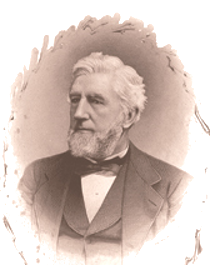
Present day Redding is a result of the Rancho Buena Ventura land grant given to Pierson B. Reading in 1844. This land grant issued by then California Governor Manuel Micheltorena, encompasses present day towns of Anderson, Cottonwood, and Redding in the northern part of California. The town, however, was not named after the recipient of the grant. Rather it was named after Benjamin B. Redding, a land agent of the Southern Pacific Railroad who decided to route the tracks through the area in 1972. Before its modern civilization, Redding was primarily settled by Native Americans of the Wintu Tribe. Settlements of the Wintu tribe stretched from the northwestern part of the Sacramento River down to the vicinity of present-day Chico.
With 600 settlers, Redding was incorporated on October 4, 1887, as a general law city formed under state legislative statutes and governed by a body of laws in the State Constitution. By 1910, Redding was supported by a mineral extraction industry principally of copper and iron and by this time the population rose to 3,572. With the decline of this industry by 1920, the population dropped to 2, 962 only to increase again to 4,188 by 1930 with the construction of Shasta Dam.
Excerpt from Historic Redding California | City of Redding. Dated 7/20/2021
